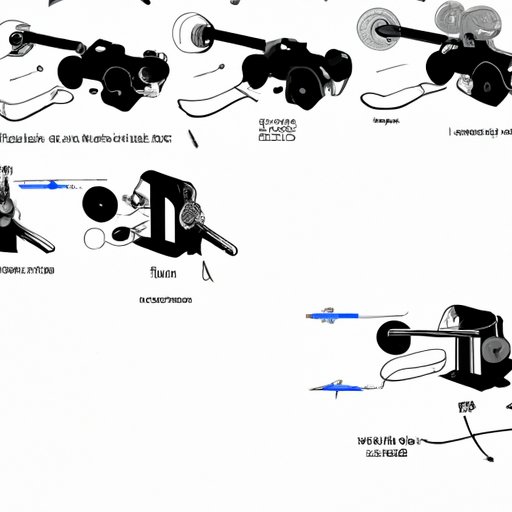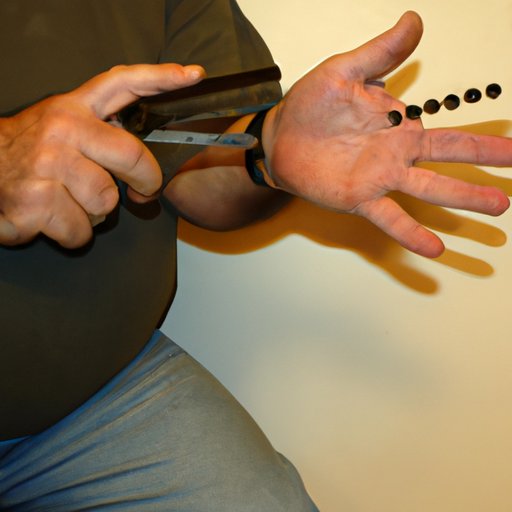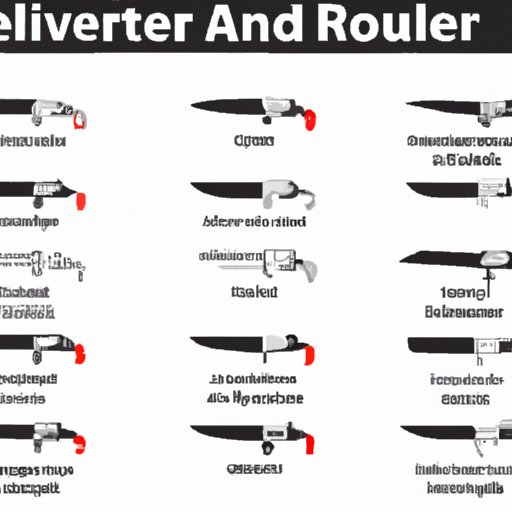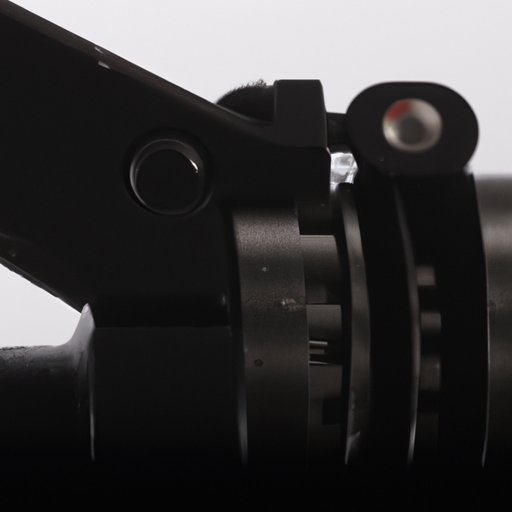Introduction
A revolver is a type of handgun that utilizes a revolving cylinder to hold multiple rounds of ammunition. It has been used for centuries as a reliable and effective means of self-defense and hunting. This article will provide an in-depth exploration of how a revolver works, including its parts and mechanics, firing sequence, and comparison with other firearm types.
Explaining the Parts of a Revolver and How They Function
To understand how a revolver works, it’s important to first familiarize yourself with its various components and how they function. The major parts of a revolver are the barrel, cylinder, hammer, trigger, and grip.
The barrel is a metal tube that houses the bullet when it is fired. It contains a small amount of gunpowder which propels the bullet out at high speeds. The cylinder is a metal chamber located behind the barrel that holds the individual cartridges. It is lined up with the barrel when the revolver is ready to fire.
The hammer is a metal component that strikes the primer of the cartridge, igniting the gunpowder inside. It is held in place by the trigger and must be pulled back before the revolver can be fired. The trigger is a metal lever that releases the hammer when pressed. It is connected to the cylinder, allowing it to rotate as the gun is fired.
Finally, the grip is the handle of the revolver. It is usually made from wood or plastic and provides a comfortable and secure hold when firing the gun.

An Overview of Revolver Mechanics and Operation
Once you’ve familiarized yourself with the parts of a revolver, it’s time to look at how these components work together to make the gun operate. The first step is to load the cylinder with the desired ammunition. This is done by pushing each round into the cylinder one at a time until it is full.
Once the cylinder is loaded, the revolver is ready to fire. To do this, the hammer must be cocked back by pulling it back with your thumb. This locks the cylinder in place and prepares the gun to be fired. Squeezing the trigger then releases the hammer, striking the primer of the cartridge and igniting the gunpowder inside. This causes the bullet to exit the barrel at high speeds.
After firing the revolver, it must be unloaded before it can be safely stored. This is done by pressing the cylinder release button and rotating the cylinder to the side. The empty cartridges can then be removed from the cylinder and disposed of appropriately.

Demonstrating the Firing Sequence of a Revolver
Now that we have an understanding of the basic mechanics of a revolver, let’s take a closer look at the firing sequence. This process begins with the hammer being pulled back with your thumb. This locks the cylinder in place and prepares the gun to be fired.
Next, squeezing the trigger releases the hammer, striking the primer of the cartridge and igniting the gunpowder inside. This causes the bullet to exit the barrel at high speeds. As the bullet leaves the barrel, the cylinder rotates to the next round, preparing the revolver to fire again. This process is repeated until all the rounds in the cylinder have been fired.
Examining the Role of Ammunition in Revolver Operation
The type of ammunition used in a revolver plays an important role in the operation of the gun. Different types of ammo can produce different results, so it’s important to select the right type for your purpose. Common types of ammo include .22LR, .38 Special, .357 Magnum, and .44 Magnum.
It’s also important to consider safety when using a revolver. All ammunition should be stored and handled responsibly to avoid accidents. Additionally, it’s important to ensure that the ammunition is compatible with the revolver before loading it into the cylinder.

A Comparison of Revolvers and Other Firearms Types
When considering a firearm for self-defense or hunting, it’s important to consider how the different types compare. One popular option is the semi-automatic pistol, which uses a magazine to store multiple rounds of ammunition and requires less force to fire than a revolver.
Shotguns are another popular choice for hunting and home defense. They are designed to fire multiple pellets, making them effective at close range but less accurate at long distances. Rifles are also a popular choice for hunting, as they have longer barrels and greater accuracy.
Conclusion
In conclusion, a revolver is a type of handgun that utilizes a revolving cylinder to hold multiple rounds of ammunition. Understanding how a revolver works requires a familiarity with its components and mechanics, as well as an understanding of the firing sequence and the role of ammunition. Finally, revolvers can be compared to other firearm types such as semi-automatic pistols, shotguns, and rifles.
(Note: Is this article not meeting your expectations? Do you have knowledge or insights to share? Unlock new opportunities and expand your reach by joining our authors team. Click Registration to join us and share your expertise with our readers.)
